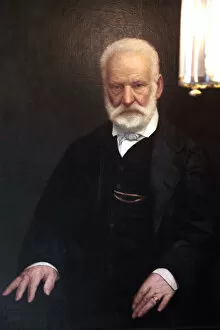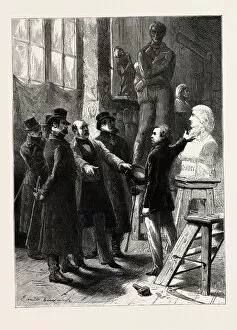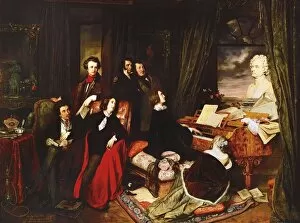Victor Hugo Collection (#13)
Victor Hugo, the renowned French writer and poet, left an indelible mark on literature and art with his captivating works
For sale as Licensed Images
Choose your image, Select your licence and Download the media
Victor Hugo, the renowned French writer and poet, left an indelible mark on literature and art with his captivating works. In scenes from his masterpiece "Les Misérables, " we witness the intense pursuit of justice as Javert, the relentless detective, seeks to capture those who have strayed from society's norms. Meanwhile, Quasimodo, the iconic hunchback of Notre Dame, stands as a symbol of resilience amidst adversity. Hauteville House in Saint Peter Port became Victor Hugo's sanctuary - a place where he found solace and inspiration for his creations. It was within these walls that he penned powerful narratives like "Les Misérables" and watched over characters such as Jean Valjean keeping a vigilant eye on young Cosette while she slept peacefully. The escape of Thenardiers adds another layer to Hugo's storytelling prowess - gripping readers' hearts with their cunning ways. His 19th-century illustrations bring life to these tales through intricate black-and-white engravings that transport us back in time. Not limited to novels alone, it also had a passion for music. An oil painting captures Franz Liszt at the piano in 1840 – an image that resonates with Hugo's belief in the harmonious relationship between different forms of art. Hugo himself emerges from history’s pages; his visage reflecting wisdom gained through years of literary exploration. And alongside him stands Quasimodo once again – forever linked to Esmeralda by fate and love. But it is not only fictional characters that occupy Hugo's world; he sheds light on societal issues too. Through poignant artwork like "The Children of The Poor, " created by T Cobb around 1875, we are confronted with images depicting poverty-stricken children whose tears mirror our collective responsibility towards those less fortunate. In "Le Torrent des rebelles, " an illustration from Han d Islande (Hugo’s early novel), we glimpse the rebellious spirit that flows through his writing.






